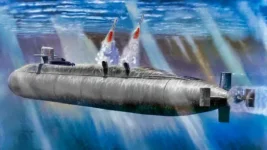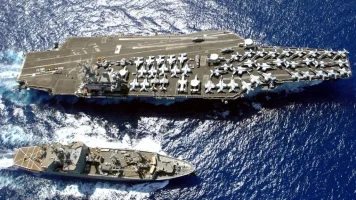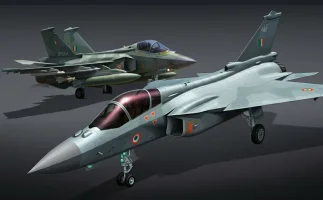- Views: 3K
- Replies: 18
India's critical plan to enhance its maritime surveillance capabilities is facing significant financial headwinds.
The proposed acquisition of six additional P-8I Poseidon long-range patrol aircraft from the United States has been complicated by a steep 50% price increase, pushing the total cost to an estimated $3.6 billion.
The United States has attributed the sharp rise in cost to global supply chain disruptions and increased production expenses, a position on which it has shown little flexibility.
This development has presented the Indian government with a difficult choice: absorb the higher cost to meet the Navy's strategic requirements or reduce the number of aircraft to be purchased, with discussions reportedly considering an acquisition of five planes instead of the original six.
The P-8I aircraft, a specialised variant of the U.S. Navy's P-8A Poseidon manufactured by Boeing, is a cornerstone of the Indian Navy's maritime strategy.
It is renowned for its advanced capabilities in anti-submarine warfare (ASW), anti-surface warfare (ASuW), and intelligence, surveillance, and reconnaissance (ISR).
These aircraft are vital for monitoring the vast expanse of the Indian Ocean Region (IOR), particularly in response to the growing and increasingly sophisticated presence of China's naval forces.
India currently operates a fleet of twelve P-8I aircraft, which have been instrumental in security operations since their induction began in 2013. Based at INS Rajali in Tamil Nadu and INS Hansa in Goa, the existing fleet has surpassed 40,000 operational flight hours.
Equipped with state-of-the-art sensors, including the APY-10 surveillance radar and magnetic anomaly detectors for submarine detection, and armed with Harpoon anti-ship missiles and MK-54 torpedoes, the P-8I serves as a powerful deterrent.
The Indian Navy has consistently projected a requirement for a total of at least 18 of these aircraft to ensure comprehensive surveillance coverage of its maritime areas of interest.
This need has become more acute following the official retirement of the Navy’s ageing fleet of Soviet-origin Ilyushin Il-38 Sea Dragon patrol aircraft in 2023, which served for 46 years. The six new aircraft are intended to fill this capability gap.
The deal for the additional planes, which the U.S. State Department had initially approved in 2021 for a cost of $2.42 billion, was previously delayed.
The Indian Ministry of Defence had put the acquisition on hold, citing the high cost and a desire to align with the 'Aatmanirbhar Bharat' initiative, which prioritises indigenous defence manufacturing.
However, strategic imperatives, chiefly the need to counter China’s naval expansion in the IOR, have brought the procurement back into focus.
The current price standoff occurs as India juggles several other high-value defence projects, including a recent deal for 26 Rafale Marine fighter jets.
In a sign of blending foreign platforms with local technology, the Navy has also begun integrating its indigenously developed Naval Anti-Ship Missile–Medium Range (NASM-MR) onto the existing P-8I fleet.
Negotiations are further complicated by broader geopolitical dynamics. The deal is seen as a key component of the deepening India-U.S. Major Defence Partnership, which both nations view as crucial for stability in the Indo-Pacific.
Reports suggest that New Delhi may leverage its requests for the emergency procurement of other American-made military hardware, such as Excalibur precision-guided munitions, as a point of negotiation to seek more favourable terms or faster delivery schedules for the crucial P-8I aircraft.



